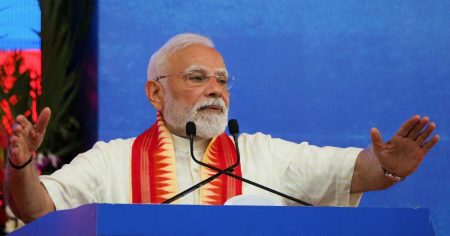The city of Chengdu, in China’s Sichuan province, is undeniably panda central. From the moment of arrival at the airport, panda imagery greets visitors in every conceivable form. This panda-mania reaches a fever pitch at the city’s combined panda research center and zoo, where panda merchandise abounds: hats, socks, costumes, bags, headbands – almost anything can be "panda-fied." Thousands of visitors throng behind glass walls, observing the iconic black and white bears leisurely munching on bamboo or lounging in wooden beds nestled in trees. The slightest movement from a panda triggers a flurry of activity, with people jostling for the perfect photo opportunity, calling out panda names, and attempting to elicit a glance. Some express frustration at the pandas’ seeming indifference to the clamor, their unwavering focus on their bamboo feast.
Pandas enjoy a celebrity-like status, requiring sharp elbows and patience to get a glimpse. Their endearing appearance and exclusivity – wild pandas live only in China – have made them a potent tool of "soft power" diplomacy. Professor Yu Tao of the University of Western Australia explains that pandas "humanize the view of China abroad and bridge political and cultural divides," making them ideal ambassadors. Over 200 pandas reside at the Chengdu Research Base, some of whom, like the popular Hua Hua, enjoy online fame with round-the-clock livestreams. Their individual personalities are noted by visitors, with some considered more engaging and interactive than others. This individualized attention further fuels the panda celebrity culture.
Panda diplomacy, the practice of gifting or loaning pandas to other nations, dates back to the Tang Dynasty. A pivotal moment in modern panda diplomacy occurred during President Nixon’s 1972 visit to China. First Lady Pat Nixon’s expressed fondness for pandas led to China gifting two pandas to the US, marking a thaw in Sino-American relations and a boost in trade. The pandas’ arrival sparked "pandamania" in the US, solidifying their role as diplomatic icebreakers. Since then, pandas have frequently been dispatched from China, often coinciding with the signing of trade agreements or commemorating diplomatic anniversaries. They act as symbols of goodwill and deepening international ties, embodying the Chinese concept of guanxi, or reciprocal relationships built on trust.
However, the seemingly benevolent nature of panda diplomacy has a more complex side. Since 1984, China has shifted from gifting to loaning pandas on ten-year contracts for substantial sums. While the funds are earmarked for panda conservation, the cost of providing fresh bamboo and specialized habitats can strain host countries. Furthermore, pandas have been used strategically; their repatriation can signal diplomatic displeasure, as seen in 2010 when pandas were recalled from the US following President Obama’s meeting with the Dalai Lama. Pandas represent not only goodwill but also a subtle form of leverage in international relations.
The recent return of pandas from the US and other countries coincided with a period of strained relations between China and the West, sparking headlines declaring "panda diplomacy is dead." However, the subsequent return of pandas to the US suggests a revival of this diplomatic tactic. Some analysts interpret this as a sign of China’s desire to mend ties, particularly in light of economic challenges. The interplay of economic considerations and diplomatic maneuvering underscores the multi-faceted nature of panda diplomacy and its ongoing role in international relations. It reinforces the idea that pandas are not merely adorable creatures but also symbolic tokens in the complex game of global politics.
Despite the resurgence of panda diplomacy, its true impact on international relations is a subject of debate. While pandas generate positive media attention and public interest, skeptics argue their influence is largely superficial. Professor Barbara Bodine of Georgetown University argues that pandas cannot fundamentally alter geopolitical realities or sway opinions on complex issues such as trade disputes or human rights. While they can serve as charming ambassadors and cultural symbols, their ability to effect substantial change in international relations remains limited. Ultimately, pandas represent a unique blend of cultural symbolism, economic leverage, and diplomatic strategy, highlighting the diverse ways nations navigate the complexities of global relations.














